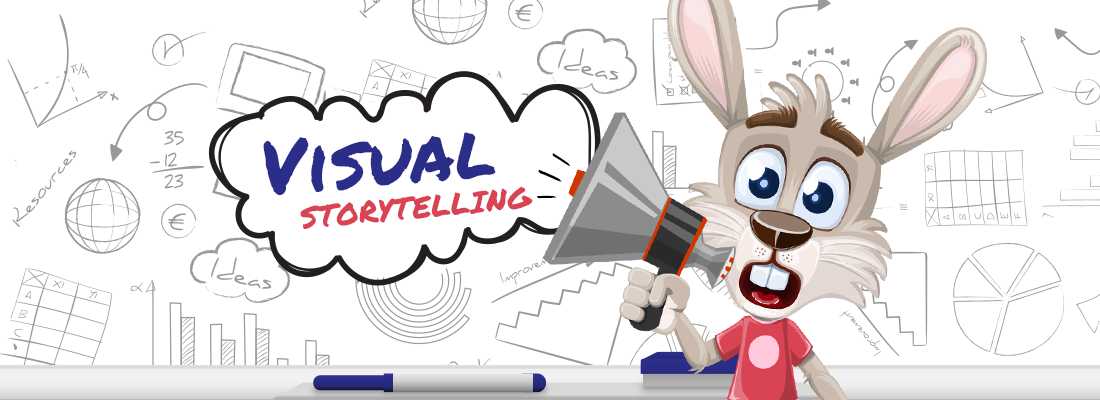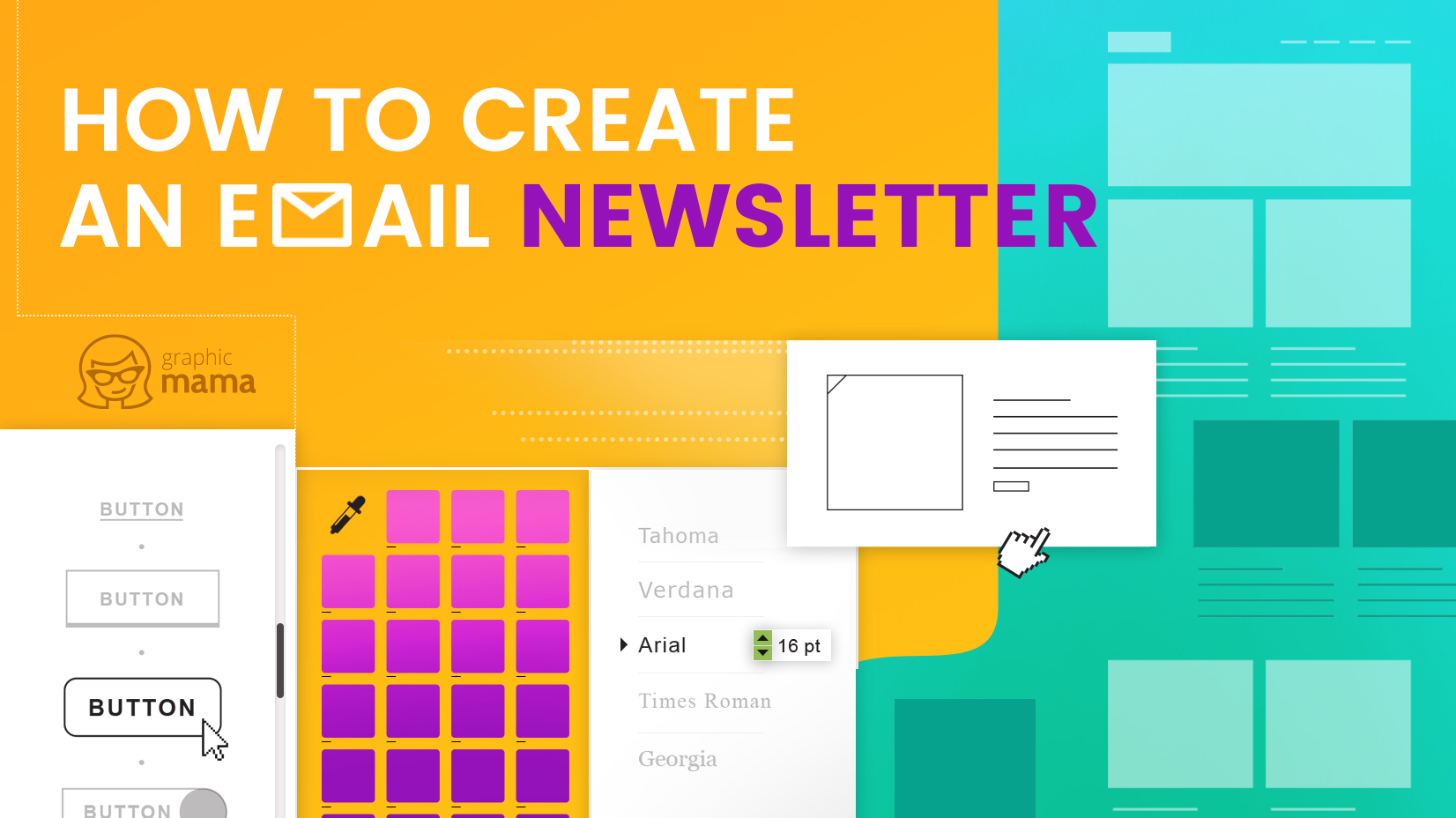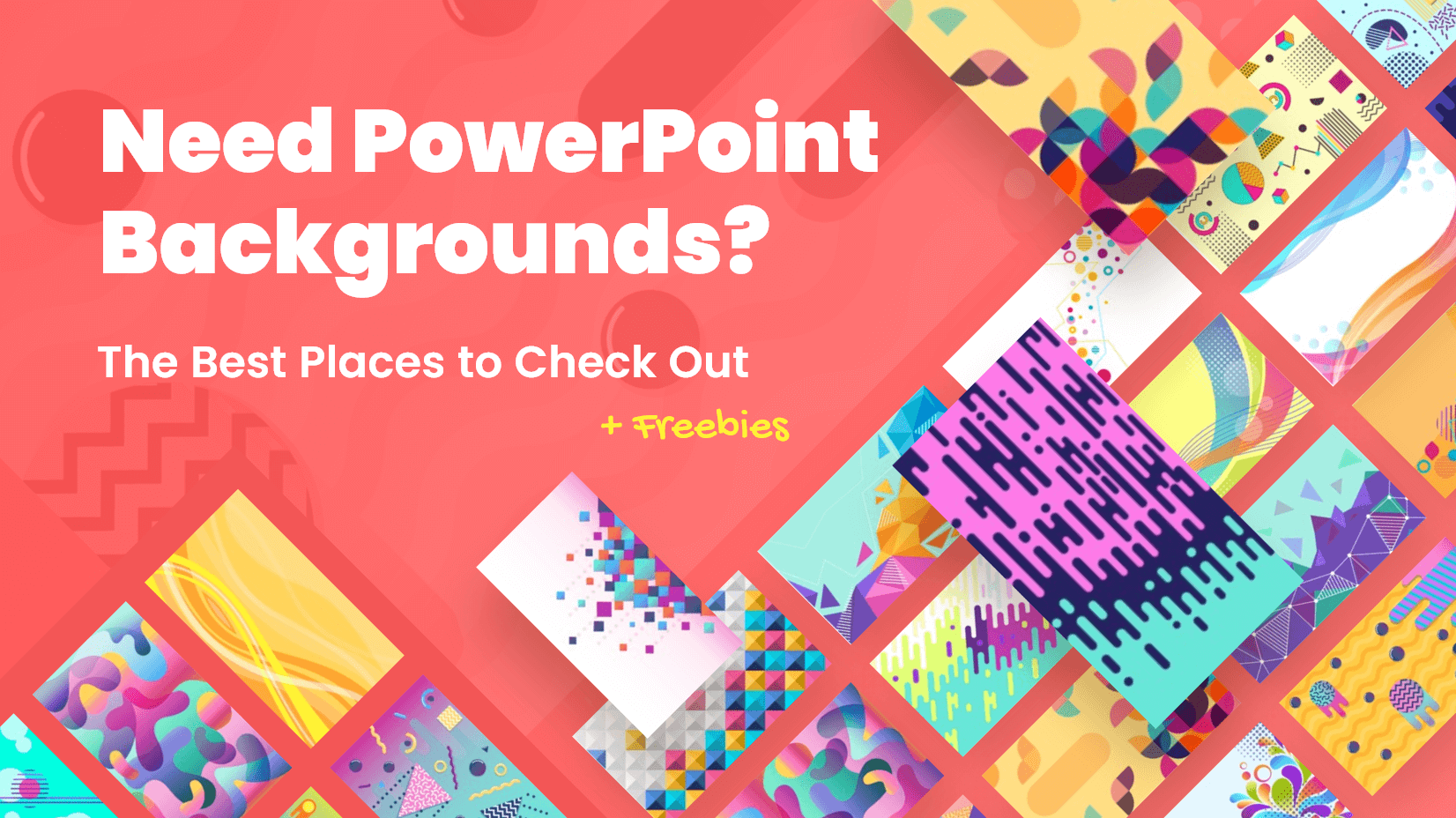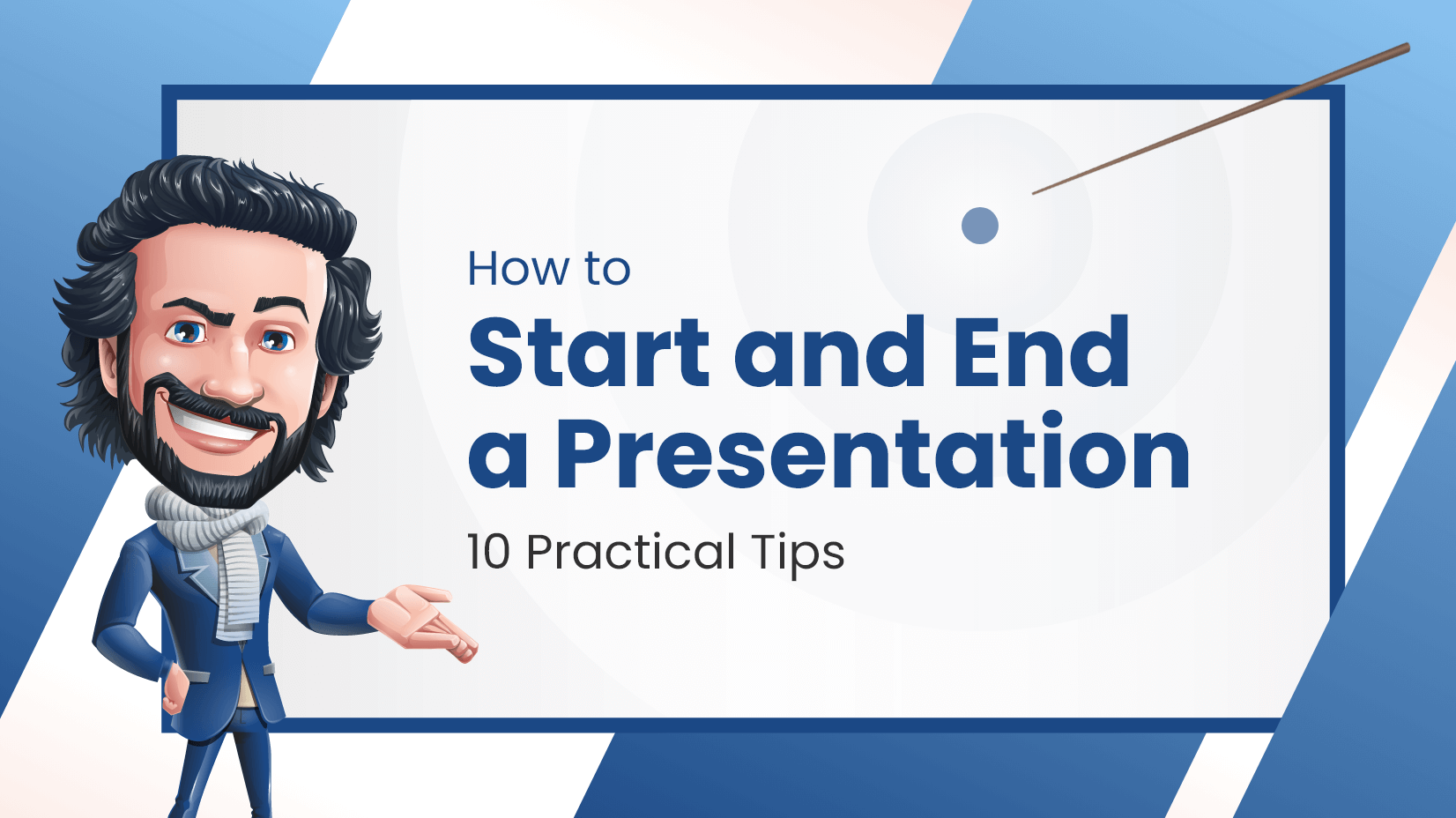
Visual storytelling is crucial part of successful branding and marketing strategies today. People no longer buy what they are shown and told to, but they have the freedom to choose what content they share with others and spread the messages that they care for. Nobody cares about the dry facts and how good your product is. There is something people care more about, and in this article you will learn what it is and how to use it to your advantage.
You may also be interested in 20 Storyboard Examples For Different Uses of Storyboarding [Apps, UX, Animation, Commercials]
Story is a fact wrapped around an emotion, and that fact and emotion together cause that we take action. –Robert Dickman
What is storytelling
Stories are universal and timeless language people communicate with, connect to and through, with each other. Since ancient times, people were drawing or sharing through the word of mouth stories, so they can remember important events. Their survival was often dependent on how good they can share their experiences and relate emotionally to others. Then, it doesn’t come as a surprise that we are just in love with telling stories!
Many successful businesses nowadays have taken advantage of this fact and are using visual storytelling in their social media to promote their brands and build a strong connection with their customers.
In this article we will present you with:
- some of the most successful storytelling campaigns of businesses on Instagram and YouTube
- we will give you some good arguments why you should start creating stories for your brand and business
- we will explain how to create a good story
First, we’d like to show you some great storytelling examples – or in other words, storytelling done right. With looking at the cases, you will slowly start getting an idea of why these campaigns are huge success. You will find that, they all have something in common. Let’s see them first, and then we will comment and see how we can use the same techniques in our own practice.
Visual storytelling examples from successful brands
Chipotle
Chipotle Mexican Grill was founded by Steve Ells in 1993 and based in Denver, Colorado. The name Chipotle derives from the Mexican Spanish name for a smoked, dried jalapeño chili pepper and its essence, it is fast food restaurant. One of the main values of the companies is, that Chipotle does not franchise its business, considering retaining ownership, setting the tone for employee culture, as well as maintaining its commitment to sustainable ingredients. See how they subtly promote their core company’s values:
https://www.youtube.com/watch?v=lUtnas5ScSE&t=19s
After the success of their first campaign in 2013, with more than 17,000,000 views on YouTube, Chipotle came back in 2016 with a new campaign to only strengthen the strong visual storytelling they established and to satisfy once more their audience. The new campaign was released less than 6 months ago, and already has over 9,000,000 views.
https://www.youtube.com/watch?v=nKleQ1MXMCs
Adidas
See how Adidas connected their slogan “Impossible is Nothing” to the personal, emotional story of Lionel Messi to launch one of their most successful campaigns. Audience loved and kept sharing and talking about the video. Guess what happened? Adidas continued this kind of commercial series, showing the vulnerability of famous sportsmen and celebrities, bringing them closer to ordinary people.
Guinness
Guinness offers us a twist in their commercial and creates a curiosity gap: a bartender serves a glass of beer every night at an empty table. Many people come in the bar, celebrating different occasions, but no one touches the beer. See what happens:
https://www.youtube.com/watch?v=TnldM0nNZ0w
Dove
What is the story of the Dove campaign that got more 7,000,000 views on YouTube? Sure, it is not about a new magical cosmetic product by Dove. The footage shows an artist portraying women without seeing them. The women describe themselves in words and after that, the artist creates another drawing – by description of the women made by other people. We are sure we sparked in your interest, with telling you part of the story, so just check it out:
https://www.youtube.com/watch?v=litXW91UauE
Airbnb
Airbnb backs up its popularity and values with visual storytelling too. They are another company which knows how to use storytelling to send a message to their audience and engage. Have a look at one of their examples, and notice how they don’t talk about what they sell first. Instead, they speak to our emotions. Obliviously, they do it well with nearly 6,000,000 views of their “commercial”:
Here are also some other examples of how businesses create successful storytelling on different social media channels:
Nike
Nike is one of the most followed and engaging brands on Instagram. Often, the heroes on their Instagram are their followers and encouraging them to create their own content with Nike’s products. Nike’s visual storytelling always rounds up around their mission: To bring inspiration and innovation to every athlete in the world. As co-founder Bill Bowerman once said, “If you have a body, you are an athlete.” Let’s see some example of the stories they tell on Instagram and YouTube that send this message:
https://www.youtube.com/watch?v=SEf7MoQYgzE
A video not focusing on a new product they want to sell or similar, but the story of a nun, who is an Ironman triathlete. More than 2,000,000 views and puts a smile on your face. Somehow, manages to whisper to you Just Do It.
Photos of athletes from all around the globe, showing them training, making them heroes of Nike’s stories.
Red Bull
Red Bull promotes certain lifestyle, which appeals to a targeted auditory. A viewer immediately connects the brand with extremes, sport, action, activities. The pictures they post on Instagram are often of active people and there is always an interesting story accompanying the photos:
Again, their strategy for Instagram marketing is well tied up with the commercials they produce:
TOMS shoes

Now that we looked at some marvelous examples of storytelling and we are sure you are impressed, let us explain what happened with your brain and
Why storytelling works
Psychologists an therapists often use visual, audio and kinesthetic modalities to immerse a person into a desired experience or state. When the mind begins to imagine and think through emotional and sensory experiences, the brain starts processing as things are actually happening. That is why, describing your emotions, struggles, joys and actions immerse a person from passively listening to a story, to an active participant.
Marketing is no longer about the stuff you make, but about the stories you tell. – Seth Godin
Think of it that way, when you are telling to your friends about your kid, you are not starting with facts, such as the weight and the height of your child, but you start by telling a story of what it did, you express your joy, concern or other emotion and that way, you are engaging your friend and helping him/her to relate to your story.
Same with colleagues – you don’t tell them what time you went to bed in the weekend, how many hours the conference lasted, but you usually catch their attention with an interesting story from this time and events. These stories are powerful because they have excitement and tension built in them. Try giving any auditory dry facts and rough data instead, and you’ll often find them bored, leaving the conversation or simply doesn’t caring of what you have to say.
By now, we are sure you understand why the storytelling examples we gave are so successful – they speak to our emotions and they tell us an interesting story! Now, let’s give you the tools of creating a successful stories for your business and brand too!
How to build a story
Powerful framework to use for visual storytelling
From Aesop’s Fables to Shakespeare’s plays, there is a powerful storytelling framework that can be used in variety of works and will hook any audience. This framework is perfectly explained with the Freytag’s pyramid.
The structure splits the story into five narrative points, evoking different emotions and keeping the audience attentive and listening. These points are: inciting moment (exposition), the complication (rising action), climax (turning point) and the reversal (falling action), which is a moment of release. Think of any good story, movie or commercial – they all have this structure.
Let’s analyze an animation short with more than 5,000,000 views that nailed a job for its creator in the animation industry. No matter if it is an animation or commercial campaign, successful stories have the same frame:
https://www.youtube.com/watch?v=96kI8Mp1uOU
Exposition: We have a boy, who is too much obsessed with video games and spends a lot of time in the dark, at home, isolated from the world.
Rising action: The boy’s mom brings a dog at home, but the puppy is with only 3 legs and the boys is repulsed by the little guy.
Climax + Falling Action: The puppy is happy and playful, even with 3 legs. Slowly the boys accepts the puppy for what it is and enjoys puppy’s company. One more powerful moment is when the boy stands up and we can see that he is missing part of his one leg too. But the boy has decided to go outside and play with the dog and not to lock himself inside the house.
Denouement, release: The boy and the puppy are happy, playing outside the house.
Create a curiosity gap
Nearly everyone has heard of TED and their talks. They share “ideas worth spreading” with the power of telling stories, not just stating facts and achievements. If you’ve watched some of their talks, you may notice how a presenter starts their stories – often with “What if I told you that you could…” Curiosity is deeply wired into us and instantly we want to hear more. The presenter does two things: turns to the audience and making them the hero; opening a curiosity gap.
Conflict
Have you identified a problem, that needs resolution? Use the consumer’s perspective and how they interact! Which will work better: “Google helps you to find all the information fast at any place and time! (so what?), or telling a story of an old man who has lost contact with a very good friend of his and they reunite with the help of Google?
Shock and Awe
People think in patterns. We process vast amounts of information and try to organize it in logical structures and sequences. Breaks in these linear patterns are exciting and burn into our memory. Remember the moment, where the boy stands up, and we realize he has one healthy leg? Know the story of Romeo and Juliet, have watched Fight Club? Bottom line – you need attention grabbers to make your audience listen and snap out of the boredom and the routine.
Carefully pick what’s subtle and what’s directly in your story
People love discovering the moral of stories by themselves. You should carefully consider what content to be delivered with raw facts and statements, and how to use allegories to create an exciting story. There is a risk running when delivering raw content, where your auditory can say: “Aha! They just want to sell me this and that” and this is the moment they stop listening to your story. Take your time and try to talk about your business and brand subtly. Bring value with your story for your customers first!
Now that we’ve provided you with some tools for creating great storytelling, don’t miss out on our next article of the series, in which you will learn how to use visual storytelling in your branding and how to increase the engagement of your auditory. You can read the article here.
We hope you enjoyed this read – let us know what you think in the comment section below!

















